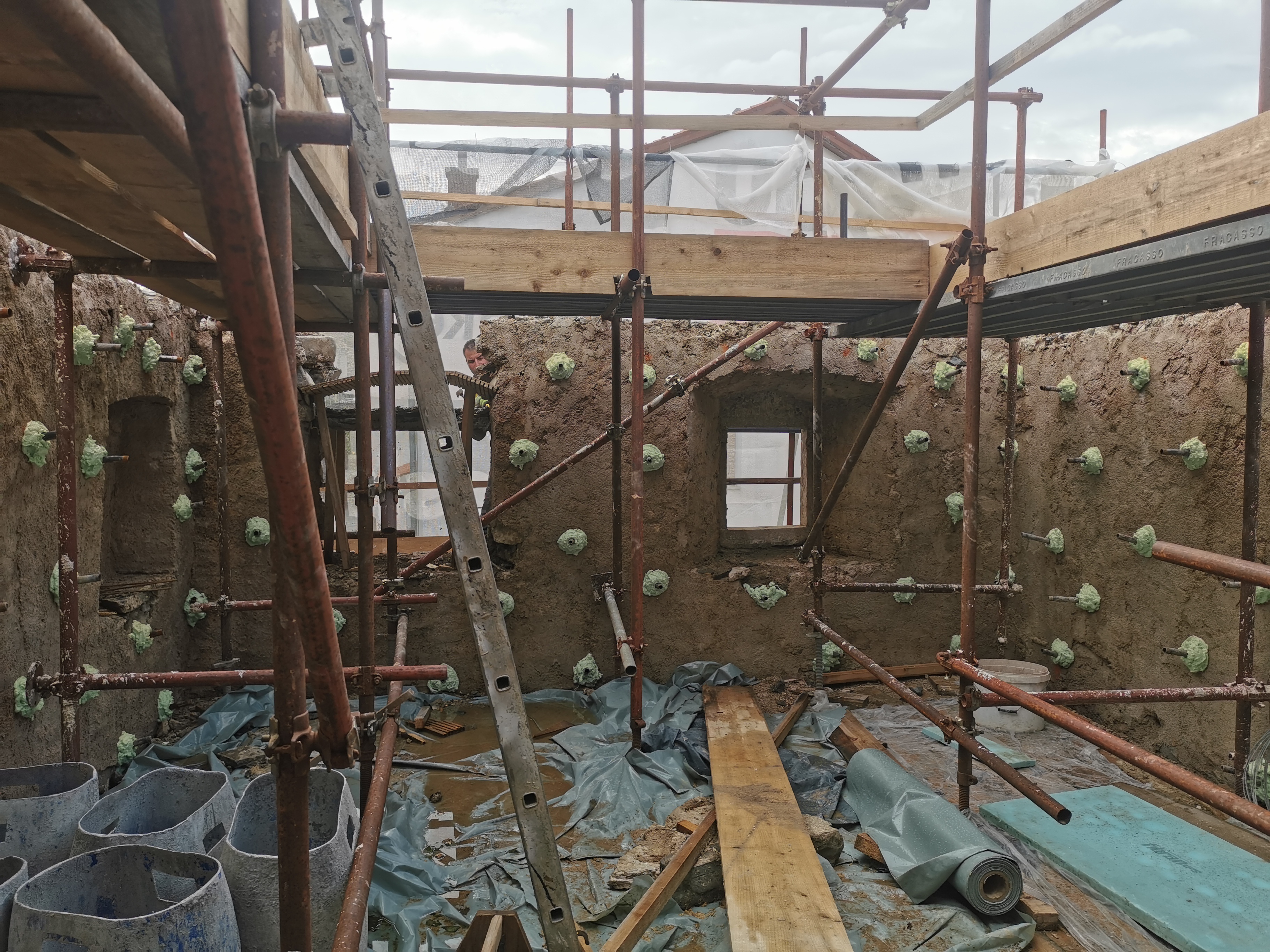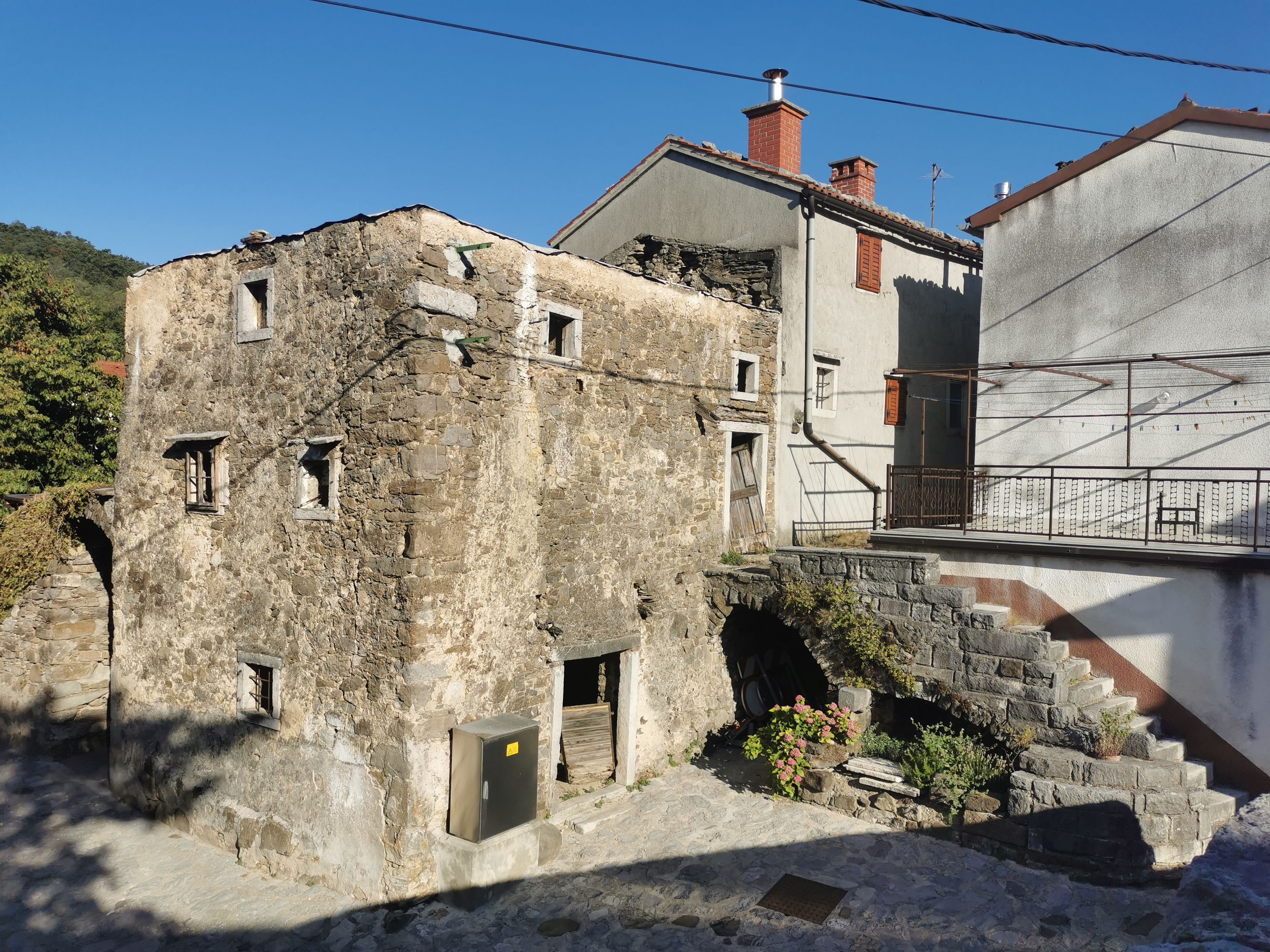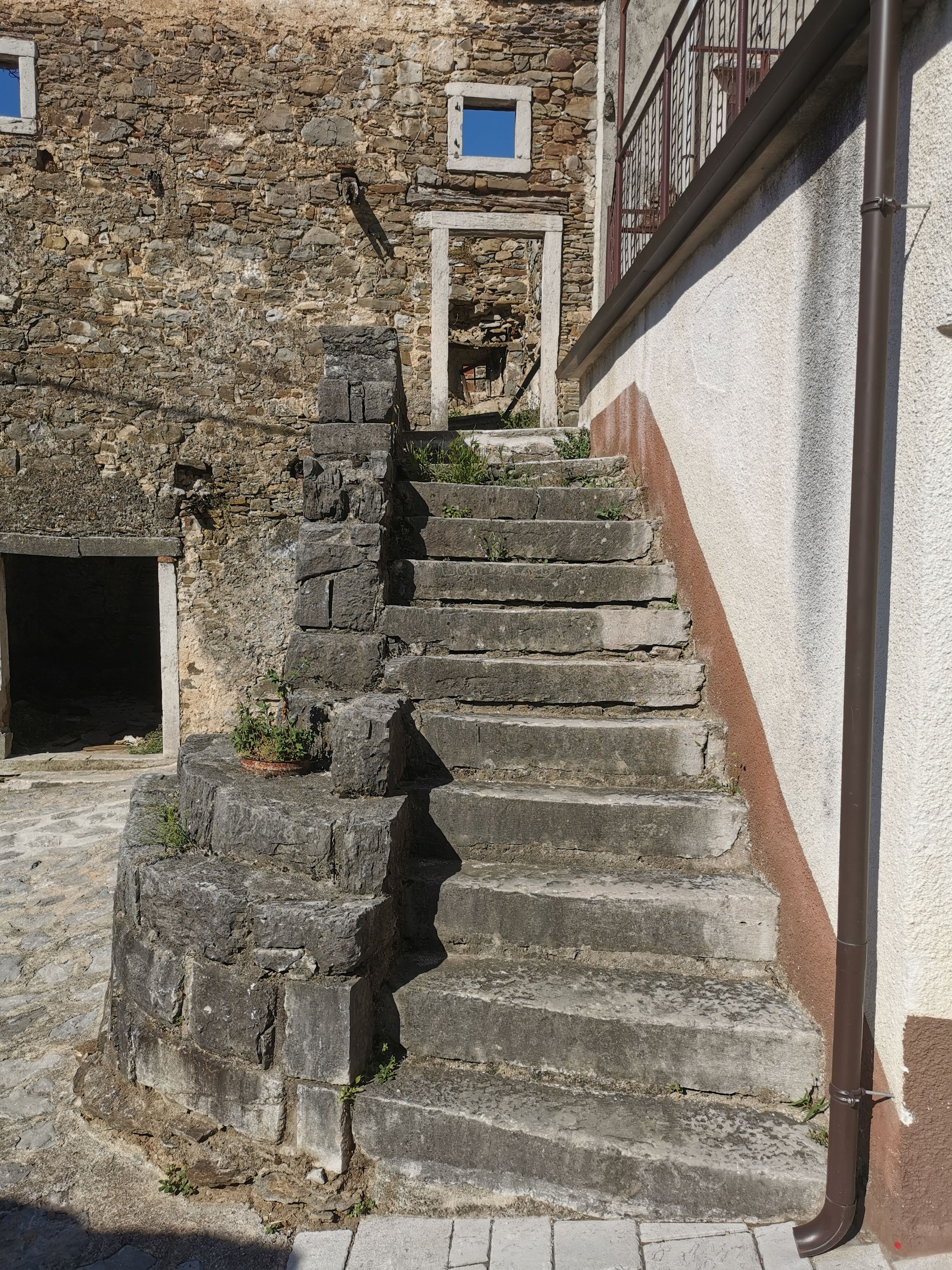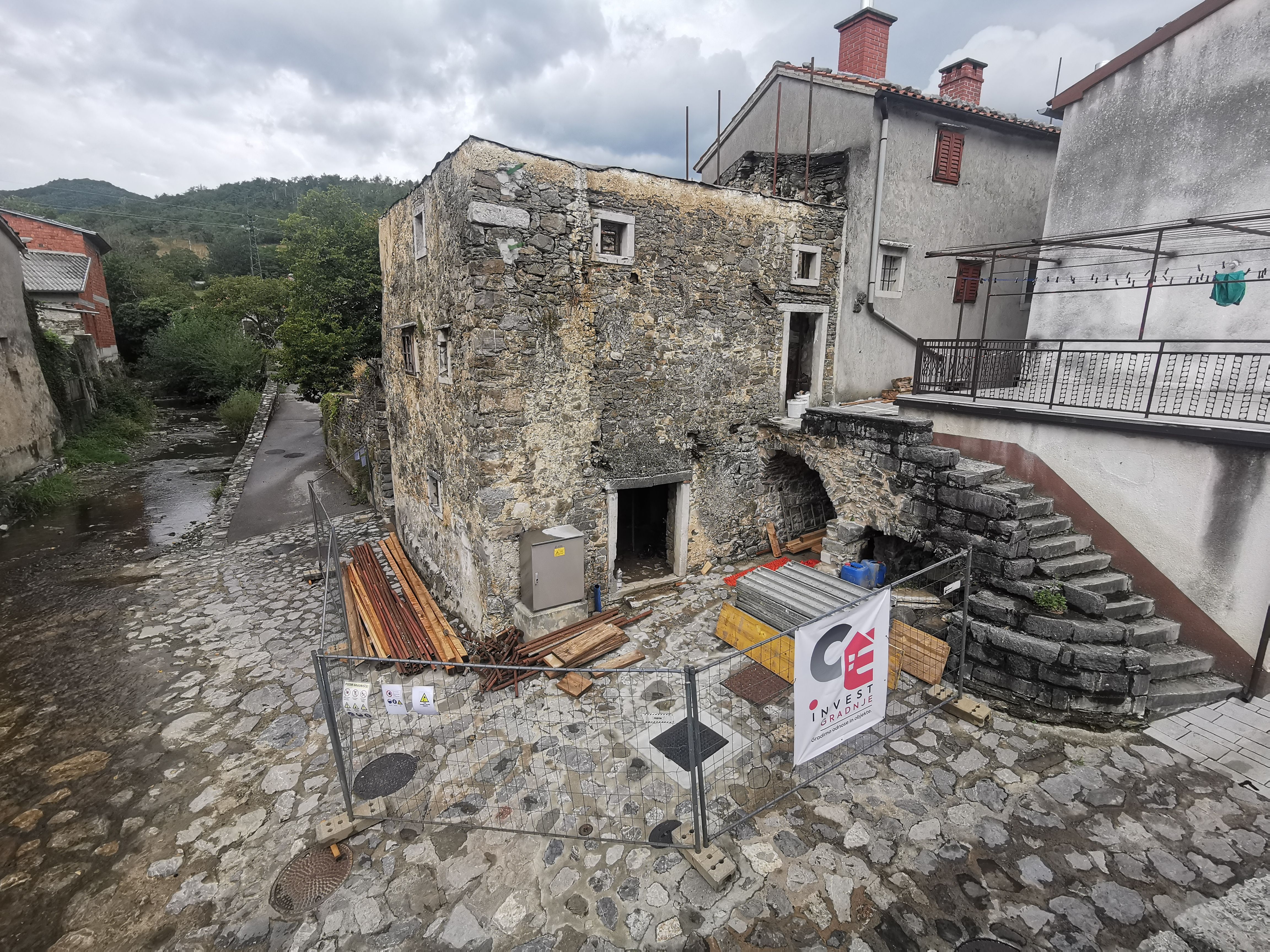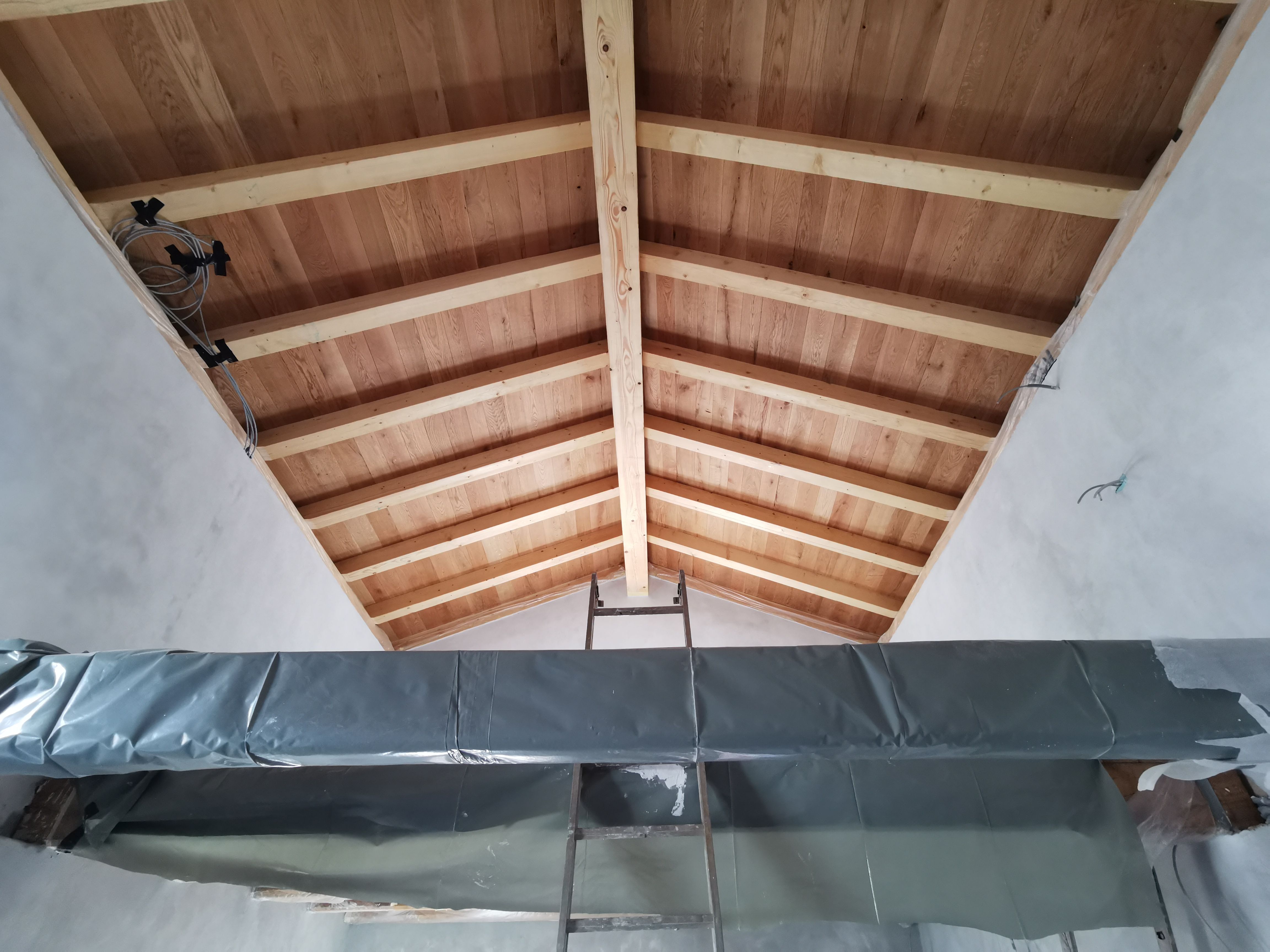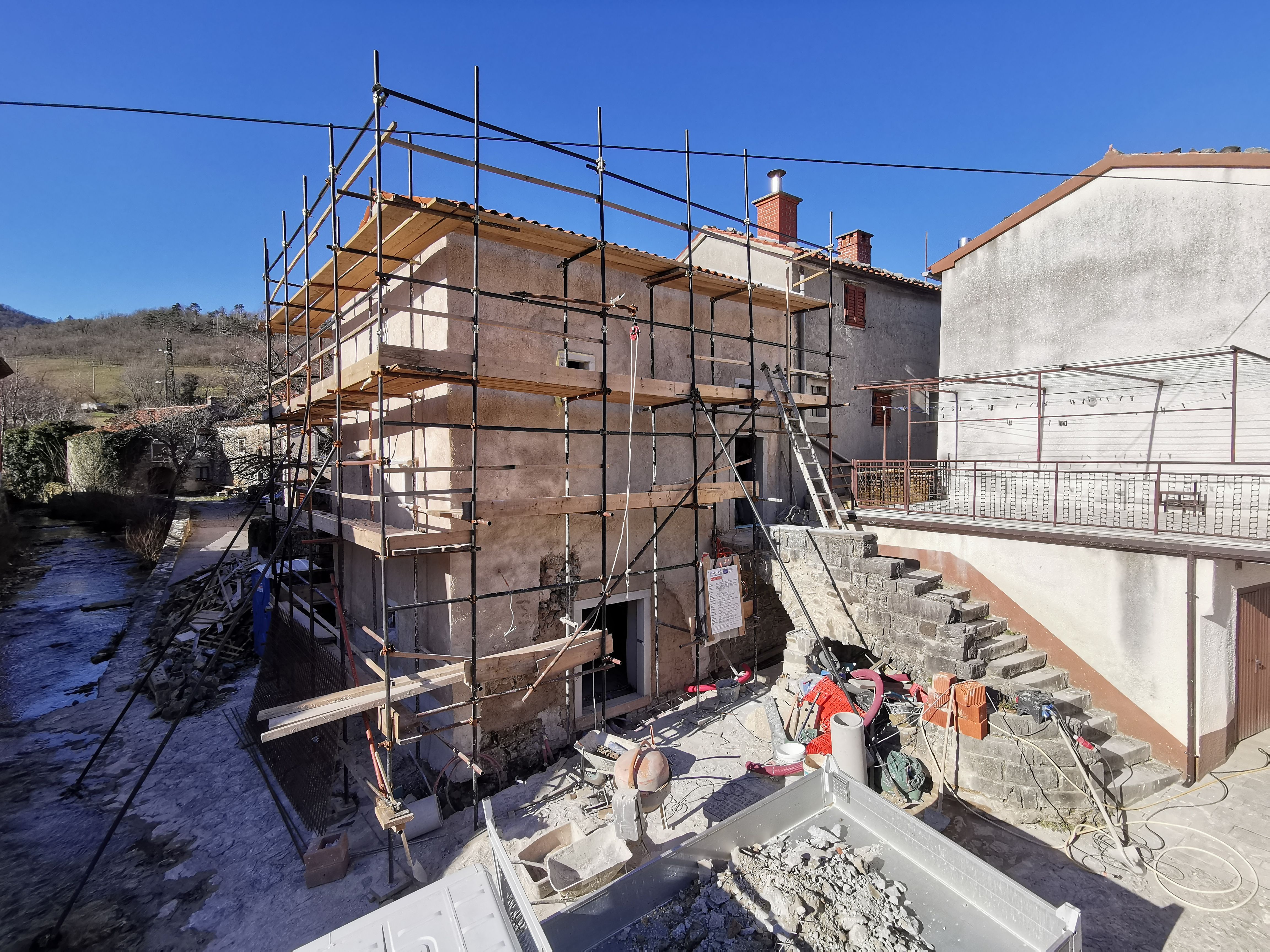ArtHouse
The house of art nature and people
Project transforms the cross-border area in line with the following values: quality of experience, sustainability and inclusion. It promotes the restoration of cultural heritage, sustainable tourism practices and the cooperation of various stakeholders. The goal is to create a more beautiful, sustainable and inclusive environment with improved infrastructure, education and events that strengthen the local tourism offer.
Slovenia
Municipality Vipava, Podnanos
Early initiative
Yes
Yes
Yes
Yes
ERDF : European Regional Development Fund
Interreg IT-SL
https://www.ita-slo.eu/en/news-and-events/news/project-beroots-sustainable-tourism-and-cultural-cooperation?fbclid=IwZXh0bgNhZW0CMTAAAR1344HC1e7_GABDdlO5NqLHq3P8iW_T8dWIbJvotj1k2_xpCcUvbWantdU_aem_MagZ8sWyjMsma8UWJ5_QPg
https://www.ita-slo.eu/en/news-and-events/news/project-beroots-sustainable-tourism-and-cultural-cooperation?fbclid=IwZXh0bgNhZW0CMTAAAR1344HC1e7_GABDdlO5NqLHq3P8iW_T8dWIbJvotj1k2_xpCcUvbWantdU_aem_MagZ8sWyjMsma8UWJ5_QPg
No
136: Vipava (SI)
Multidisciplinarity, functionality, and the connection between art, technology, and sustainable tourism form the foundation of our project, which integrates architecture, aesthetics, design, sustainability, and social inclusion. In the Municipality of Vipava, we aim to revive a degraded building and transform it into a dynamic space for cultural heritage, where the story of the Slovenian national anthem will be aesthetically presented.
The building will be freely accessible to smaller groups, primarily young people and families, ensuring inclusion and an interactive cultural heritage experience. The space will be designed according to Bauhaus principles—simplicity, functionality, and the integration of various artistic disciplines—allowing visitors to enjoy a holistic experience.
The renovation will proceed in accordance with cultural heritage standards and under the supervision of the relevant authorities. However, we aim to go beyond architectural restoration and create a space that promotes education, exploration, and artistic expression. In doing so, we align with the Bauhaus vision that architecture is not just construction, but a way of shaping the future.
In addition to revitalizing the building, the project also includes the establishment of a cycling path to Sovodnje. The Vipava River, which originates in the Municipality of Vipava and flows into Sovodnje, symbolizes connection—just as our project brings together sustainable mobility, sports, and cultural heritage. This path will not only be a physical connection between the towns but also a symbol of connecting people, art, and nature, which is a core principle of Bauhaus.
With this initiative, we are creating a model space that combines the past and the future, the local and the global, architecture and community. This is a space where culture becomes accessible to all and where new stories are created in the spirit of sustainability, innovation, and interdisciplinarity.
The building will be freely accessible to smaller groups, primarily young people and families, ensuring inclusion and an interactive cultural heritage experience. The space will be designed according to Bauhaus principles—simplicity, functionality, and the integration of various artistic disciplines—allowing visitors to enjoy a holistic experience.
The renovation will proceed in accordance with cultural heritage standards and under the supervision of the relevant authorities. However, we aim to go beyond architectural restoration and create a space that promotes education, exploration, and artistic expression. In doing so, we align with the Bauhaus vision that architecture is not just construction, but a way of shaping the future.
In addition to revitalizing the building, the project also includes the establishment of a cycling path to Sovodnje. The Vipava River, which originates in the Municipality of Vipava and flows into Sovodnje, symbolizes connection—just as our project brings together sustainable mobility, sports, and cultural heritage. This path will not only be a physical connection between the towns but also a symbol of connecting people, art, and nature, which is a core principle of Bauhaus.
With this initiative, we are creating a model space that combines the past and the future, the local and the global, architecture and community. This is a space where culture becomes accessible to all and where new stories are created in the spirit of sustainability, innovation, and interdisciplinarity.
sustainable tourism
cultural heritage
Multidisciplinarity
connection
functionality
The project offers us an opportunity for transformation and the establishment of a connected and collaborative society based on sustainable and cultural values through sustainable tourism and cultural heritage. The project allows individuals to have a unique experience by visiting the site and participating in events held in the revitalized building. With a refined style, we aim to present the story of the "Zdravljica" (The Toast) and introduce lesser-known artists through a brochure, while guiding visitors along the cycling path between the municipalities of Vipava and Sovodnje, which is connected by the Vipava River.
We ensure sustainability by creating infrastructure tailored to individual visitors and smaller groups. The project is located in less-visited areas and directs tourists from more crowded places to less developed regions, contributing to their development. We promote a circular economy through the renovation of a degraded building and area, which, after reconstruction, will be dedicated to showcasing the story of the Slovenian national anthem. All areas will be freely accessible to visitors of all generations, ensuring affordability. The content about the artists will also be available in a brochure that will link both areas.
The cycling path will facilitate sustainable mobility between the areas, offering opportunities to experience nature and cultural heritage while encouraging a healthy lifestyle. We will particularly present the content to young people, aiming to introduce them indirectly to the values of the new European Bauhaus.
The project aims to inspire individuals to adopt a lifestyle where they move sustainably between destinations, learn about the beauty of nature and cultural heritage in an affordable way, and connect with the local environment and economy.
We ensure sustainability by creating infrastructure tailored to individual visitors and smaller groups. The project is located in less-visited areas and directs tourists from more crowded places to less developed regions, contributing to their development. We promote a circular economy through the renovation of a degraded building and area, which, after reconstruction, will be dedicated to showcasing the story of the Slovenian national anthem. All areas will be freely accessible to visitors of all generations, ensuring affordability. The content about the artists will also be available in a brochure that will link both areas.
The cycling path will facilitate sustainable mobility between the areas, offering opportunities to experience nature and cultural heritage while encouraging a healthy lifestyle. We will particularly present the content to young people, aiming to introduce them indirectly to the values of the new European Bauhaus.
The project aims to inspire individuals to adopt a lifestyle where they move sustainably between destinations, learn about the beauty of nature and cultural heritage in an affordable way, and connect with the local environment and economy.
The project comprehensively renovates a small building in Slovenia, where modern materials and technologies intertwine to create an aesthetically refined and functional environment. With an innovative approach, we not only enrich the architectural appearance of the space but also create a space for high-quality cultural experiences and authentic encounters. In small places with simple amenities, we present significant themes.
To spread knowledge about cultural heritage, we are preparing a brochure that strengthens cultural ties and enables broader artistic connections, creating opportunities for new networking.
The project also impacts the wider area, transforming it into an aesthetically appealing, functional, and sustainability-oriented space. By establishing a cycling path, we encourage sustainable mobility and strengthen the link between the green environment and the digital future—content about the path will also be available in digital form. This way, individuals can create their unique sustainable experience that connects cultural heritage with exploring nature.
Through this project, we not only enhance the aesthetic and cultural aspects of the space but also address social challenges. The renovation of degraded areas improves the quality of life for residents and visitors, while promoting a healthy lifestyle through movement. In this way, we create a sustainable, culturally and aesthetically refined environment that inspires, connects, and elevates the quality of life. The content will be available for free, giving the area the opportunity to be presented to a broader audience in an accessible, aesthetic way.
To spread knowledge about cultural heritage, we are preparing a brochure that strengthens cultural ties and enables broader artistic connections, creating opportunities for new networking.
The project also impacts the wider area, transforming it into an aesthetically appealing, functional, and sustainability-oriented space. By establishing a cycling path, we encourage sustainable mobility and strengthen the link between the green environment and the digital future—content about the path will also be available in digital form. This way, individuals can create their unique sustainable experience that connects cultural heritage with exploring nature.
Through this project, we not only enhance the aesthetic and cultural aspects of the space but also address social challenges. The renovation of degraded areas improves the quality of life for residents and visitors, while promoting a healthy lifestyle through movement. In this way, we create a sustainable, culturally and aesthetically refined environment that inspires, connects, and elevates the quality of life. The content will be available for free, giving the area the opportunity to be presented to a broader audience in an accessible, aesthetic way.
The project is based on the principles of accessibility, affordability, and inclusive management, ensuring equal participation of all groups, regardless of social status, age, or physical abilities.
The planned infrastructure, including the renovated building and cycling path, is designed according to the principles of "design for all." This means that access is provided for people with different needs, including the elderly, families with children, and young people. Additionally, we will provide free digital content about cultural heritage, the local environment, and nature, thereby expanding access to knowledge regardless of an individual's financial capabilities.
The project is based on the collaboration of various stakeholders – local communities, artists, municipal administrations, and experts. This ensures that the project reflects the actual needs of the community and allows for active co-creation of the space.
Through the project, we strengthen intercultural dialogue, which, with its creativity, contributes to innovation in design and architecture. The digital presentation of the cycling path connects the physical and virtual worlds, promoting sustainable tourism. At the same time, the project includes elements of a healthy lifestyle, encouraging visitors to engage in active leisure activities.
The project demonstrates that innovative approaches and cross-sectoral cooperation can create a sustainable, accessible, and inclusive community. By linking nature, culture, and digital solutions, a model is emerging that can be transferred to other regions and enhanced with new content. In this way, the project not only improves the quality of life for the local population but also serves as a best practice example for holistic space and community development.
The planned infrastructure, including the renovated building and cycling path, is designed according to the principles of "design for all." This means that access is provided for people with different needs, including the elderly, families with children, and young people. Additionally, we will provide free digital content about cultural heritage, the local environment, and nature, thereby expanding access to knowledge regardless of an individual's financial capabilities.
The project is based on the collaboration of various stakeholders – local communities, artists, municipal administrations, and experts. This ensures that the project reflects the actual needs of the community and allows for active co-creation of the space.
Through the project, we strengthen intercultural dialogue, which, with its creativity, contributes to innovation in design and architecture. The digital presentation of the cycling path connects the physical and virtual worlds, promoting sustainable tourism. At the same time, the project includes elements of a healthy lifestyle, encouraging visitors to engage in active leisure activities.
The project demonstrates that innovative approaches and cross-sectoral cooperation can create a sustainable, accessible, and inclusive community. By linking nature, culture, and digital solutions, a model is emerging that can be transferred to other regions and enhanced with new content. In this way, the project not only improves the quality of life for the local population but also serves as a best practice example for holistic space and community development.
The initiative is based on the active involvement of residents, visitors, and the broader civil society, as they are key stakeholders in its design and implementation. Residents of the Municipality of Vipava and visitors to the Hiša Zdravljica will have the opportunity to participate in various activities, such as concerts, cultural events, and educational programs. Their engagement will be ensured through public discussions, workshops, and direct participation in shaping the final solutions.
Local artists also play a significant role in co-creation, contributing their ideas and expertise while shaping the events. The initiative includes collaboration with civil society and non-governmental organizations, which provide professional support, organizational capacity, and additional opportunities for the inclusion of vulnerable groups, ensuring broader accessibility and social inclusion.
A special focus is placed on young people, who will gain additional knowledge and skills through the project, positively impacting their personal and professional development. The active involvement of residents allows the project to adapt to the actual needs of the community, enhancing a sense of belonging and responsibility for shared spaces. In this way, the initiative not only improves the quality of life but also strengthens social ties, promotes active citizenship, and ensures the project's long-term sustainability.
Local artists also play a significant role in co-creation, contributing their ideas and expertise while shaping the events. The initiative includes collaboration with civil society and non-governmental organizations, which provide professional support, organizational capacity, and additional opportunities for the inclusion of vulnerable groups, ensuring broader accessibility and social inclusion.
A special focus is placed on young people, who will gain additional knowledge and skills through the project, positively impacting their personal and professional development. The active involvement of residents allows the project to adapt to the actual needs of the community, enhancing a sense of belonging and responsibility for shared spaces. In this way, the initiative not only improves the quality of life but also strengthens social ties, promotes active citizenship, and ensures the project's long-term sustainability.
At various levels, numerous stakeholders have been involved in the design and implementation of the initiative, ensuring a comprehensive approach to its execution and long-term success.
At the local level, key stakeholders included the Municipality of Vipava, the Sports Association Nanos Podnanos, the Cycling Club Izvir Vipava, the Local Community of Podnanos, the Local Community of Vipava, the Tourism Association Podnanos, and the Tourism Institute TRG Vipava. Representatives of the local community actively contributed proposals in the fields of sustainable tourism, local governance, sustainable mobility, sports, and education, taking into account the needs of both young and elderly residents while developing solutions tailored to the specific local environment.
At the regional level, the project goes beyond local boundaries, connecting two countries—Slovenia and Italy—thus contributing to broader cross-border cooperation. Additionally, the project will be presented within the framework of the European Capital of Culture, further strengthening its regional dimension and increasing its recognition in a wider cultural and social context.
At the European level, the initiative has been endorsed within the Interreg program, signifying recognition of its importance and alignment with European goals for sustainable development, cross-border cooperation, and cultural connectivity. Integration into European funding mechanisms allows for a broader impact and ensures long-term support for its implementation.
Through this multi-level involvement, the initiative brings together local, regional, national, and European actors, creating a collaborative model that transcends geographical, cultural, and institutional boundaries. This approach facilitates the effective realization of project goals while strengthening connections between diverse communities and stakeholders.
At the local level, key stakeholders included the Municipality of Vipava, the Sports Association Nanos Podnanos, the Cycling Club Izvir Vipava, the Local Community of Podnanos, the Local Community of Vipava, the Tourism Association Podnanos, and the Tourism Institute TRG Vipava. Representatives of the local community actively contributed proposals in the fields of sustainable tourism, local governance, sustainable mobility, sports, and education, taking into account the needs of both young and elderly residents while developing solutions tailored to the specific local environment.
At the regional level, the project goes beyond local boundaries, connecting two countries—Slovenia and Italy—thus contributing to broader cross-border cooperation. Additionally, the project will be presented within the framework of the European Capital of Culture, further strengthening its regional dimension and increasing its recognition in a wider cultural and social context.
At the European level, the initiative has been endorsed within the Interreg program, signifying recognition of its importance and alignment with European goals for sustainable development, cross-border cooperation, and cultural connectivity. Integration into European funding mechanisms allows for a broader impact and ensures long-term support for its implementation.
Through this multi-level involvement, the initiative brings together local, regional, national, and European actors, creating a collaborative model that transcends geographical, cultural, and institutional boundaries. This approach facilitates the effective realization of project goals while strengthening connections between diverse communities and stakeholders.
Various stakeholders at the local, regional, national, and European levels were involved in the design and implementation of the initiative. The collaboration of stakeholders from different sectors—culture, sustainable tourism, education, sports, and local development—enabled a comprehensive, interdisciplinary approach that addresses community needs and supports the sustainable development of the area.
At the local level, key roles were played by the Municipality of Vipava, the Local Communities of Vipava and Podnanos, and local tourism and sports associations (Tourism Association Podnanos, Tourism Institute TRG Vipava, Sports Association Nanos Podnanos, and Cycling Club Izvir Vipava). Their role focused on contributing expertise in local heritage, sustainable tourism, and sports and mobility solutions. The initiative also includes the restoration of a degraded site, which will be dedicated to showcasing cultural heritage, particularly lesser-known artists and historical figures.
At the regional level, the Development Agency RRA ROD played a crucial role in coordinating the application and providing strategic support for the project. Additionally, the initiative has connected neighboring municipalities through the establishment of a cycling route between Vipava and Sovodnje, promoting sustainable mobility and linking the natural and cultural heritage of the broader area.
At the national level, experts in cultural heritage and sustainable development are involved, providing professional guidelines for the restoration of the site in accordance with heritage protection standards. Collaboration with ministries and other relevant institutions ensures alignment with broader strategic development goals.
At the European level, the initiative is linked to the EU Bauhaus initiative, which promotes innovative, sustainable, and aesthetic solutions to improve the quality of life.
At the local level, key roles were played by the Municipality of Vipava, the Local Communities of Vipava and Podnanos, and local tourism and sports associations (Tourism Association Podnanos, Tourism Institute TRG Vipava, Sports Association Nanos Podnanos, and Cycling Club Izvir Vipava). Their role focused on contributing expertise in local heritage, sustainable tourism, and sports and mobility solutions. The initiative also includes the restoration of a degraded site, which will be dedicated to showcasing cultural heritage, particularly lesser-known artists and historical figures.
At the regional level, the Development Agency RRA ROD played a crucial role in coordinating the application and providing strategic support for the project. Additionally, the initiative has connected neighboring municipalities through the establishment of a cycling route between Vipava and Sovodnje, promoting sustainable mobility and linking the natural and cultural heritage of the broader area.
At the national level, experts in cultural heritage and sustainable development are involved, providing professional guidelines for the restoration of the site in accordance with heritage protection standards. Collaboration with ministries and other relevant institutions ensures alignment with broader strategic development goals.
At the European level, the initiative is linked to the EU Bauhaus initiative, which promotes innovative, sustainable, and aesthetic solutions to improve the quality of life.
The project introduces an innovative approach to sustainable tourism and cultural heritage preservation in the cross-border region. Its innovative dimension lies in the holistic integration of various activities that go beyond conventional practices in tourism and heritage conservation. Instead of focusing solely on individual aspects, it combines sustainable development, education, community participation, and the promotion of less-developed areas into a unified strategy.
A key innovative component of the project is the establishment of sustainable tourism infrastructure that enables individual visits and small group experiences. This approach responds to modern trends in authentic and personalized experiences while helping to disperse tourist flows and alleviate pressure on overcrowded destinations, surpassing traditional mass tourism strategies.
The project also stands out for its focus on less-visited hinterland areas with untapped tourism potential, which have not yet been adequately promoted. Through a comprehensive strategy that includes heritage restoration, site revitalization, and infrastructure improvements, it provides sustainable solutions for the long-term development of these regions.
An important aspect of the initiative is addressing the low recognition of lesser-known artists. By reviving cultural heritage, establishing commemorative sites, and integrating artistic creators into the revitalization process, the project contributes to increasing their visibility and incorporating them into contemporary tourism flows.
With its holistic approach, combining sustainable tourism, heritage conservation, education, and local collaboration, the project offers an innovative solution for the sustainable development of the region. Its uniqueness lies in the interweaving of tourism and cultural heritage with the active involvement of various target groups, creating long-term added value for both the local community and visitors.
A key innovative component of the project is the establishment of sustainable tourism infrastructure that enables individual visits and small group experiences. This approach responds to modern trends in authentic and personalized experiences while helping to disperse tourist flows and alleviate pressure on overcrowded destinations, surpassing traditional mass tourism strategies.
The project also stands out for its focus on less-visited hinterland areas with untapped tourism potential, which have not yet been adequately promoted. Through a comprehensive strategy that includes heritage restoration, site revitalization, and infrastructure improvements, it provides sustainable solutions for the long-term development of these regions.
An important aspect of the initiative is addressing the low recognition of lesser-known artists. By reviving cultural heritage, establishing commemorative sites, and integrating artistic creators into the revitalization process, the project contributes to increasing their visibility and incorporating them into contemporary tourism flows.
With its holistic approach, combining sustainable tourism, heritage conservation, education, and local collaboration, the project offers an innovative solution for the sustainable development of the region. Its uniqueness lies in the interweaving of tourism and cultural heritage with the active involvement of various target groups, creating long-term added value for both the local community and visitors.
The initiative is based on a holistic and interdisciplinary approach, bringing together collaboration with various stakeholders at multiple levels—from the local community to national and European authorities. Key aspects of the methodology include close cooperation with higher authorities, professional preparation of project documentation, involvement of local stakeholders, participatory content development, and the application of business and management methodologies for sustainable tourism development.
Since the site is under cultural heritage protection, a coordinated approach with the relevant institutions was necessary during the preparation of the project documentation. We collaborated with the competent heritage conservation institutes, which provided guidelines for the renovation and ensured compliance with conservation requirements. The initiative was also aligned with the relevant ministries and other public bodies supporting sustainable development and cultural heritage preservation.
At the local level, we actively worked with the Municipality of Vipava, the local communities of Vipava and Podnanos, and representatives of local associations, such as the Podnanos Tourist Association, the Tourism Institute TRG Vipava, and various sports organizations. Their role was crucial in shaping the site’s content and linking the initiative with local tourism and sustainable regional development.
Due to the site's cultural heritage status, precise alignment with conservation guidelines was required in the preparation of project documentation. The documentation included architectural and conservation plans that ensured the preservation of the site's authenticity while enabling its revitalization in line with contemporary needs. Experts in cultural heritage conservation, architecture, and sustainable renovation were involved in the process.
Since the site is under cultural heritage protection, a coordinated approach with the relevant institutions was necessary during the preparation of the project documentation. We collaborated with the competent heritage conservation institutes, which provided guidelines for the renovation and ensured compliance with conservation requirements. The initiative was also aligned with the relevant ministries and other public bodies supporting sustainable development and cultural heritage preservation.
At the local level, we actively worked with the Municipality of Vipava, the local communities of Vipava and Podnanos, and representatives of local associations, such as the Podnanos Tourist Association, the Tourism Institute TRG Vipava, and various sports organizations. Their role was crucial in shaping the site’s content and linking the initiative with local tourism and sustainable regional development.
Due to the site's cultural heritage status, precise alignment with conservation guidelines was required in the preparation of project documentation. The documentation included architectural and conservation plans that ensured the preservation of the site's authenticity while enabling its revitalization in line with contemporary needs. Experts in cultural heritage conservation, architecture, and sustainable renovation were involved in the process.
The initiative represents a highly transferable and replicable model that can be adapted to different locations, target groups, and contexts. Key elements contributing to its replicability include its methodology, sustainable tourism approach, participatory model, cultural heritage revitalization strategies, and innovative management practices.
The interdisciplinary approach, which combines cultural heritage preservation, sustainable tourism, education, and local development, can be easily adapted to other regions. Collaboration with municipalities, local communities, and associations ensures community involvement, enhancing the long-term sustainability of the initiative. This participatory decision-making model and engagement of local stakeholders can be applied in various settings.
The establishment of sustainable tourism infrastructure, designed for individual visits and small groups, is a flexible concept that can be transferred to other areas. The development of cycling routes as a connecting element between municipalities promotes sustainable mobility and serves as a best-practice example for other regions aiming to reduce traffic pressure and increase the attractiveness of less-developed tourist areas.
The model for restoring degraded buildings in accordance with cultural heritage conservation guidelines is a best-practice example for other areas with abandoned cultural heritage sites. Strict adherence to conservation principles ensures that restored buildings are preserved in line with their historical value while being adapted to modern needs.
The focus on showcasing lesser-known artists and local cultural heritage through interactive content within the site allows for the application of a similar model in other regions to promote local art and history.
The interdisciplinary approach, which combines cultural heritage preservation, sustainable tourism, education, and local development, can be easily adapted to other regions. Collaboration with municipalities, local communities, and associations ensures community involvement, enhancing the long-term sustainability of the initiative. This participatory decision-making model and engagement of local stakeholders can be applied in various settings.
The establishment of sustainable tourism infrastructure, designed for individual visits and small groups, is a flexible concept that can be transferred to other areas. The development of cycling routes as a connecting element between municipalities promotes sustainable mobility and serves as a best-practice example for other regions aiming to reduce traffic pressure and increase the attractiveness of less-developed tourist areas.
The model for restoring degraded buildings in accordance with cultural heritage conservation guidelines is a best-practice example for other areas with abandoned cultural heritage sites. Strict adherence to conservation principles ensures that restored buildings are preserved in line with their historical value while being adapted to modern needs.
The focus on showcasing lesser-known artists and local cultural heritage through interactive content within the site allows for the application of a similar model in other regions to promote local art and history.
The initiative addresses key global challenges such as cultural heritage preservation, sustainable tourism, climate change, sustainable mobility, and social inclusion, offering concrete local solutions that contribute to the long-term development of the community and the environment.
Worldwide, cultural heritage is being destroyed due to urbanization, lack of funding for restoration, and the loss of cultural identity. The initiative revitalizes a degraded cultural site and adapts it to modern needs while respecting conservation guidelines. This ensures the long-term protection of cultural heritage and its integration into the everyday life of the community.
Mass tourism leads to overcrowding in certain destinations, causing environmental and social issues, while many lesser-known areas remain overlooked. The initiative promotes sustainable and dispersed tourism by directing visitors to less frequented areas, engaging the local community, and providing authentic and sustainable experiences. The development of cycling routes and sustainable infrastructure enables a balanced long-term tourism strategy.
The increase in greenhouse gas emissions from transport and inefficient resource use contributes to climate change. The initiative promotes sustainable mobility by developing a cycling connection between municipalities, reducing dependence on cars. The restoration of the site follows sustainable construction principles, minimizing its carbon footprint and improving energy efficiency. Additionally, it encourages a healthier lifestyle by promoting outdoor physical activity along the cycling route.
In many regions, young people and vulnerable groups are excluded from cultural and tourism development, leading to reduced local engagement and migration. The initiative prioritizes the inclusion of young people, families, and local residents in shaping content and implementing activities.
Worldwide, cultural heritage is being destroyed due to urbanization, lack of funding for restoration, and the loss of cultural identity. The initiative revitalizes a degraded cultural site and adapts it to modern needs while respecting conservation guidelines. This ensures the long-term protection of cultural heritage and its integration into the everyday life of the community.
Mass tourism leads to overcrowding in certain destinations, causing environmental and social issues, while many lesser-known areas remain overlooked. The initiative promotes sustainable and dispersed tourism by directing visitors to less frequented areas, engaging the local community, and providing authentic and sustainable experiences. The development of cycling routes and sustainable infrastructure enables a balanced long-term tourism strategy.
The increase in greenhouse gas emissions from transport and inefficient resource use contributes to climate change. The initiative promotes sustainable mobility by developing a cycling connection between municipalities, reducing dependence on cars. The restoration of the site follows sustainable construction principles, minimizing its carbon footprint and improving energy efficiency. Additionally, it encourages a healthier lifestyle by promoting outdoor physical activity along the cycling route.
In many regions, young people and vulnerable groups are excluded from cultural and tourism development, leading to reduced local engagement and migration. The initiative prioritizes the inclusion of young people, families, and local residents in shaping content and implementing activities.
Our initiative is built on interdisciplinarity, functionality, and the fusion of art, technology, and sustainable tourism. In the Municipality of Vipava, we aim to revitalize a degraded building and transform it into a dynamic cultural heritage space that aesthetically narrates the story of the Slovenian national anthem.
Incorporating the values of the New European Bauhaus (NEB), our project merges architecture, design, sustainability, and social inclusion. The renovated space will be freely accessible to small groups, particularly young people and families, ensuring inclusivity and an interactive cultural heritage experience. Designed according to Bauhaus principles—simplicity, functionality, and the integration of various artistic disciplines—it will provide visitors with a holistic and immersive experience.
The renovation will follow heritage conservation standards under the supervision of relevant authorities. However, we aim to go beyond architectural restoration by creating a space that fosters education, research, and artistic expression. This aligns with Bauhaus' vision that architecture is not merely about construction but about shaping the future.
Additionally, the project includes the establishment of a cycling route connecting Vipava to Sovodnje. The Vipava River, originating in Vipava and flowing into Sovodnje, symbolizes connection—just as our initiative links sustainable mobility, sports, and cultural heritage. This pathway is more than just a physical connection between locations; it serves as a metaphor for bridging people, art, and nature, a core Bauhaus principle.
Moving forward, we will further integrate digital solutions to enhance accessibility, implement eco-friendly construction methods, and collaborate with local and international partners to ensure the project’s sustainability. Our initiative sets a model for spaces that intertwine past and future, local and global, architecture and community.
Incorporating the values of the New European Bauhaus (NEB), our project merges architecture, design, sustainability, and social inclusion. The renovated space will be freely accessible to small groups, particularly young people and families, ensuring inclusivity and an interactive cultural heritage experience. Designed according to Bauhaus principles—simplicity, functionality, and the integration of various artistic disciplines—it will provide visitors with a holistic and immersive experience.
The renovation will follow heritage conservation standards under the supervision of relevant authorities. However, we aim to go beyond architectural restoration by creating a space that fosters education, research, and artistic expression. This aligns with Bauhaus' vision that architecture is not merely about construction but about shaping the future.
Additionally, the project includes the establishment of a cycling route connecting Vipava to Sovodnje. The Vipava River, originating in Vipava and flowing into Sovodnje, symbolizes connection—just as our initiative links sustainable mobility, sports, and cultural heritage. This pathway is more than just a physical connection between locations; it serves as a metaphor for bridging people, art, and nature, a core Bauhaus principle.
Moving forward, we will further integrate digital solutions to enhance accessibility, implement eco-friendly construction methods, and collaborate with local and international partners to ensure the project’s sustainability. Our initiative sets a model for spaces that intertwine past and future, local and global, architecture and community.

